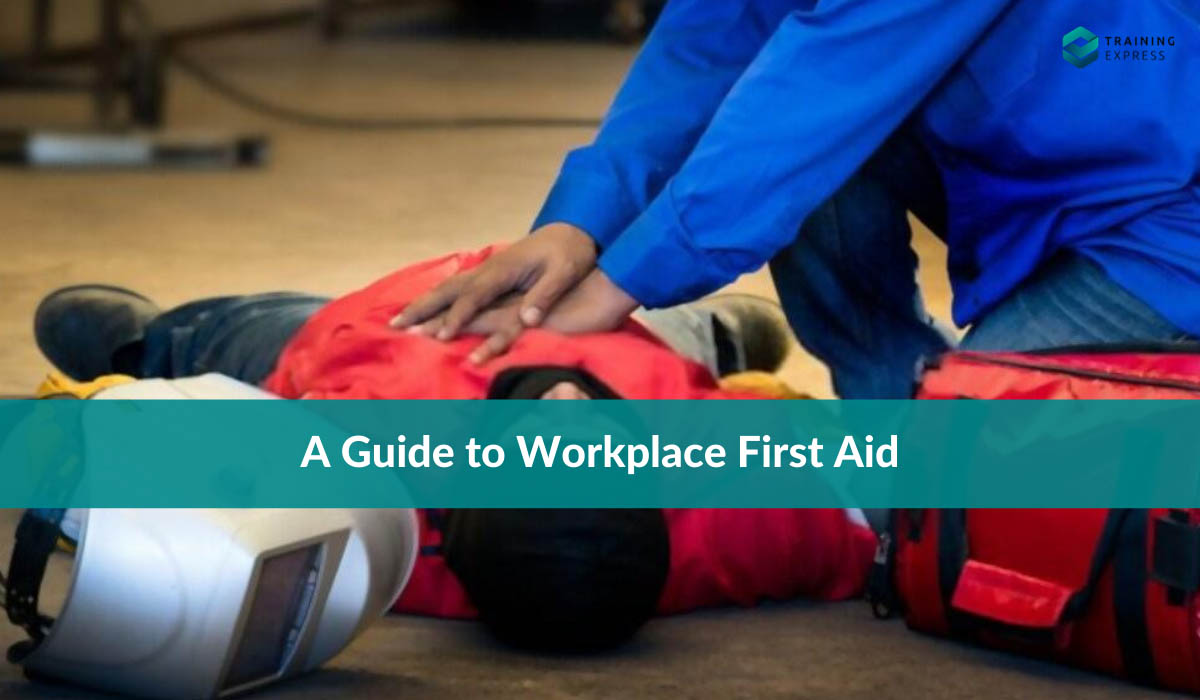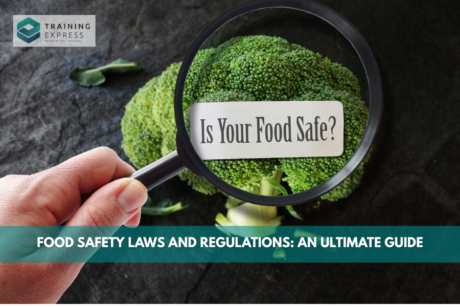

All workplaces present different kinds of hazards for their workers. A Workplace where workers are not exposed to the dangers of causing serious injuries or illnesses is considered a low-risk workplace. On the other hand, workplaces that put workers at a specific level of danger are called high-risk workplace. In all workplaces, there is a need and certain measures are taken to provide effective and immediate workplace first aid to workers that require such attention.
Table of Contents
What is workplace first aid?
First aid is the immediate emergency care given to an injured or ill person. The purpose of the workplace first aid is to prevent and minimize the worsening of the situation and minimize the effects. The immediate aid provisions are arranged until advance professional help arrives or the person recovers.
What type of emergency may arise in the workplace?
A medical emergency at the workplace may be defined as a serious unforeseen situation. This can be caused by a sudden illness or injury that requires medical attention.

In general, the emergency that may occur at the workplace depends on the type of workplace. In a high-risk workplace such as a construction or a chemical plant may possess the dangers of falling from heights, falling objects or burns as worst-case scenarios. So the preparedness for emergencies in such work is different.
On the other hand, a low-risk workspace such as an office may possess a different set of hazards. The worst-case scenario in an in a low-risk office may be severe health hazards such as cardiac arrest or a stroke.
Other minor occurrences that are also common in low-risk environments are:
- Breaking or sprain in bones from slips and trips (may occur from exposed cables)
- Continuous bleeding from a cut
- Burns
- Sprained muscles
- Seizures
- Allergic reactions
What type of first aid kits are required in the workplace?
When it comes to first aid there are three P’s to remember. They stand for preserving life, preventing deterioration and promoting recovery. Along with a first aid manual, a first aid kit should contain basic equipments to treat following situations such as:
- Cuts, scratches, punctures, splinters
- Muscular sprains
- Minor first-degree burns
- Injuries to the eye
- Broken bones from falls or slips
- Electric shock
So to cure all the above-mentioned situations a first aid kit should consist of:
- Different sizes of sterile gauze pads
- Band-aids of different sizes and shapes
- Surgical tapes
- Antiseptic wipes
- Antibiotic ointments
- Antiseptic solution
A few other useful items that you may as well possess incase of an emergency are
- Saline cleaning wipes
- Adhesive tape
- Sterile adhesive dressing
- Resuscitation face shield with valve(provides protection while CPR)
How to do CPR
CPR stands for Cardiopulmonary Resuscitation. It is a combination of techniques involving chest compression and pumping of breath to get the heart circulating and deliver air to the brain until advanced medical help may arrive.
It is an emergency medical procedure used whenever someone is not breathing and when the heart is not beating. Normally this type of situation may occur during a cardiac arrest. So if someone starts taking gasping breaths don’t wait until his breathing stops. Start to apply CPR.

Follow the steps given below to perform a CPR:
- Make sure the patient is lying flat on his back on a firm surface. Kneel beside him and position your hand right on the centre of his chest.
- Interlock your fingers and keep your arms straight.
- Give a chest compression leaning your soldiers right above the patient’s chest.
- Open the patient’s chin to open the airway.
- Blow on the patient's mouth until you see the chest rise. This is called rescue breath.
- Watch the chest fall and again give rescue breath to the patient.
- Repeat chest compressions and rescue breadths.
What are the regulation regarding workplace first aid?
According to health and safety(first aid) regulations 1981, the employer needs to ensure their employee’s safety. To this extent, employers need to provide adequate and appropriate equipment. It’s the employer’s responsibility to ensure employees receive immediate medical attention in case of any injury or illness.
The first aid requirements of a workplace depend on the following factors:
- Nature of the work and the hazard inflicted upon by them. First aid requirements vary depending on whether the workplace is high or low risk.
- Size and location of the workplace.
- The number of workers involved.
Who is in charge of workplace first aid?
An emergency first aider is in charge of the various roles and responsibilities in an emergency situation. The HSE recommends having at least one first aid trained staff in an enterprise out of every 5-50 employees. Although this margin may vary depending on workplace conditions.
The role of a first aider is to provide immediate life-saving care before advanced assistance arrives. His main aim is to prevent worsening of the situation and promote recovery.
The number of first aid trained workers recommended by HSE for the low-risk workplace are as follows:
- One for every 5-50 workers
- Two for every 51-100 workers
- Additional one for every 100 workers
For high-risk workplaces:
- One for up to 25 workers
- Two for 26-50 workers
- Additional one for every 50 workers

Workplace first aid training
A qualification in workplace first aid is a well sought after skill by employers these days. So qualified first aiders are always in demand in all organisations. Training courses on workplace first aid has benefited employees to handle such emergency situations.
Adding more and more trained workers is also leading to fewer cases. This has caused a fewer number of cases in the organisation. As a result organisations productivity has greatly increased. Organisations are even arranging refresher training for their employees. Its purpose is to improve their performances in their jobs.
Lorem ipsum dolor sit amet, consectetur adipiscing elit. Ut elit tellus, luctus nec ullamcorper mattis, pulvinar dapibus leo.
- Available Courses
- Law10
- IT & Software224
- Design27
- Training6
- Accounting & Finance Primary47
- Teaching & Academics Primary36
- Teaching22
- Quality Licence Scheme Endorsed160
- Healthcare168
- Animal care10
- Job Ready Programme52
- Charity & Non-Profit Courses28
- HR & Leadership4
- Administration & Office Skills2
- Mandatory Training36
- Regulated Courses4
- Health and Safety519
- Marketing37
- Career Bundles201
- Construction58
- Electronics31
- Hospitality28
- Health and Social Care289
- Child Psychology40
- Management422
- Business Skills292
- First Aid73
- Employability283
- Safeguarding79
- Food Hygiene115
- Personal Development1580

 Food Hygiene
Food Hygiene Health & Safety
Health & Safety Safeguarding
Safeguarding First Aid
First Aid Business Skills
Business Skills Personal Development
Personal Development





